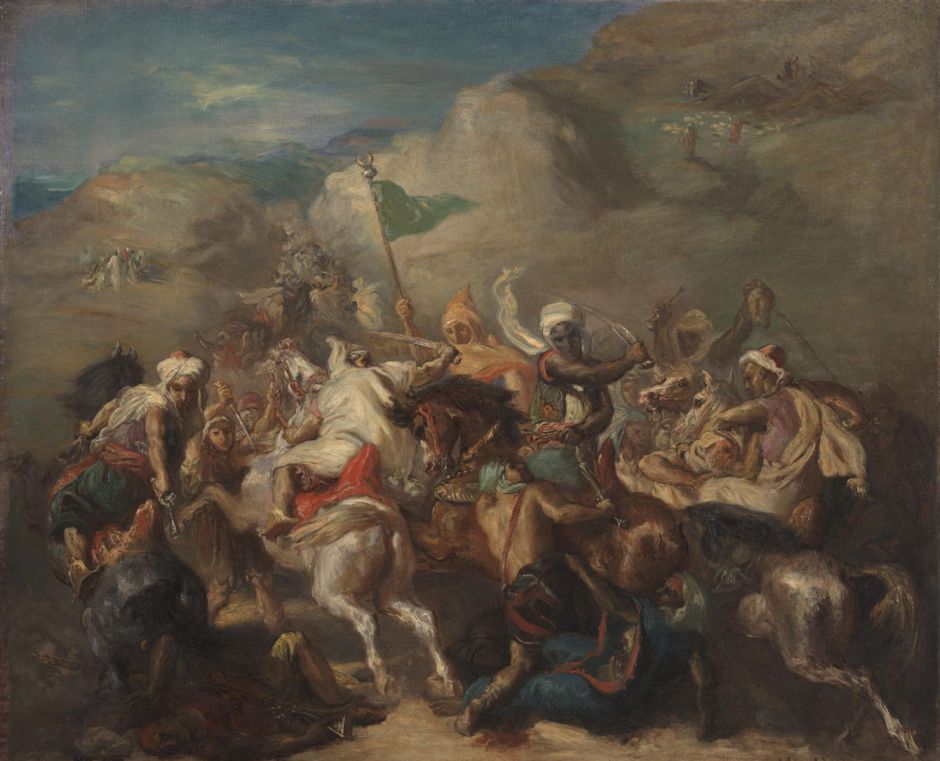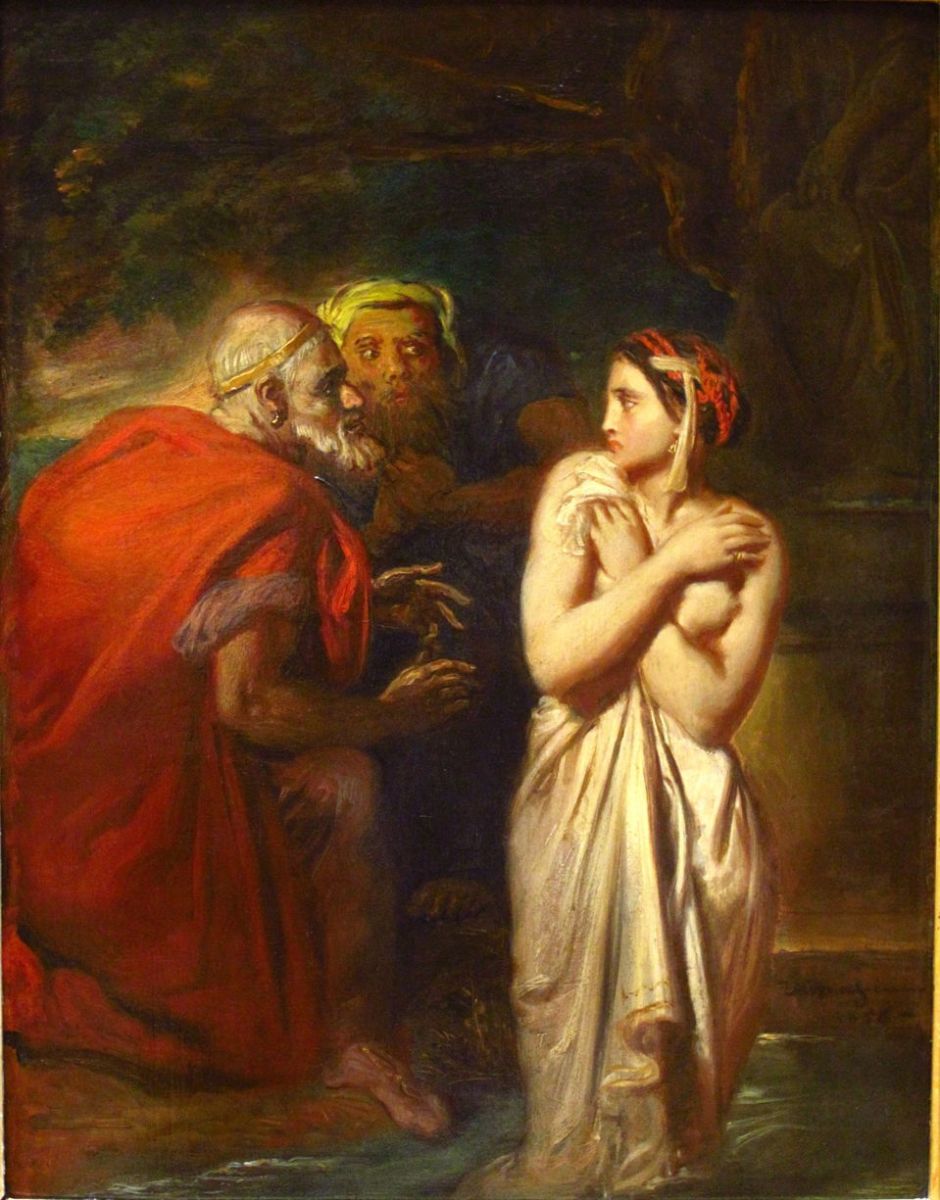This is the second of two articles looking at the paintings of Théodore Chassériau (1819–1856), who was born two hundred years ago, on 20 September. In the first, I looked at a selection of his youthful works up to 1849.

The part of Algeria which he visited had been seized by France in 1837, so at that time it was an integral part of France. Scene in the Jewish Quarter of Constantine (1851) shows a mother and, presumably, her mother with an infant in an ingenious rocking cradle. Constantine is now the third largest city in Algeria, and has long had a substantial Jewish population.
Chassériau was one of many painters to be inspired by Lord Byron’s poem Mazeppa, published in 1819; I have looked at its depiction in paintings in this article.

Byron’s poem ends when Mazeppa wakes up in bed, having been rescued from unconsciousness by a “Cossack Maid”, who then tends his wounds. Chassériau’s A Young Cossack Woman Finds Mazeppa Unconscious on a Wild Horse is one of the few faithful accounts of the end of the poem, down to the ravens flying overhead waiting to feed on Mazeppa’s corpse.

In the mid-1850s, Chassériau’s Orientalism took the inevitable turn towards the erotic. This started with his Orientalist Interior: Nude in a Harem from 1850-52, which refers strongly to Delacroix’s earlier Women of Algiers in their Apartment, from 1834, a second version of which Delacroix painted in 1847-49.

The logical successor to that wasn’t derived from sketches made during a visit to Algeria, but went back much earlier, to the visit which he’d made to Pompeii in 1840: The Tepidarium (1853). This shows a carefully composed group of women in the warm room prior to their proceeding to a hot or cold bath, and is traditionally understood to have been the most richly-decorated of spaces in classical Roman baths. This painting was acclaimed when it was shown at the Salon.

In 1854, Chassériau revisited his north African theme with this vivacious painting of a Battle of Arab Horsemen Around a Standard. This too shows the influence of Delacroix, and despite its wonderful painterly style, it contains numerous details, such as the brandishing of a severed head, by one of the horsemen at the rear, mid-right.

The following year, he returned to one of the most popular Shakespearean scenes in visual art, taken from the tragedy of Macbeth: Macbeth and Banquo Meeting the Witches on the Heath (1855), painted in the style of Delacroix.

In the early 1850s, Chassériau was commissioned to paint murals in the Paris churches of Saint-Roch and Saint-Philippe-du-Roule, which he completed by 1855. Descent from the Cross (1855) is his vast mural for the latter, showing one of the most popular of the scenes from the Crucifixion, also known as the Deposition. Chassériau tackled this in a very conventional and traditional manner, using a composition which dated back to Rogier van der Weyden in about 1435.
These huge works and his already deteriorating health combined to weaken him markedly during the winter of 1855-56.

Earlier in 1856, Chassériau painted another account of the story of Susanna and the Elders, which is more powerful and more intimate that his first from 1839. In a more traditional composition, he shows the elders propositioning Susanna as she tries to cover her nakedness and shrink back from their advances in defiance. The elders are not quite touching her yet, but edging far too close.
Later that year Chassériau’s health finally collapsed, and he died that October, just a month after his thirty-seventh birthday. For the last five years, he had been a close friend and mentor to the young Gustave Moreau, who was devastated by Chassériau’s untimely death. Delacroix survived him by seven years, while Ingres himself died over a decade later, having apparently called his former pupil ‘the Napoleon of painting’.
Reference

